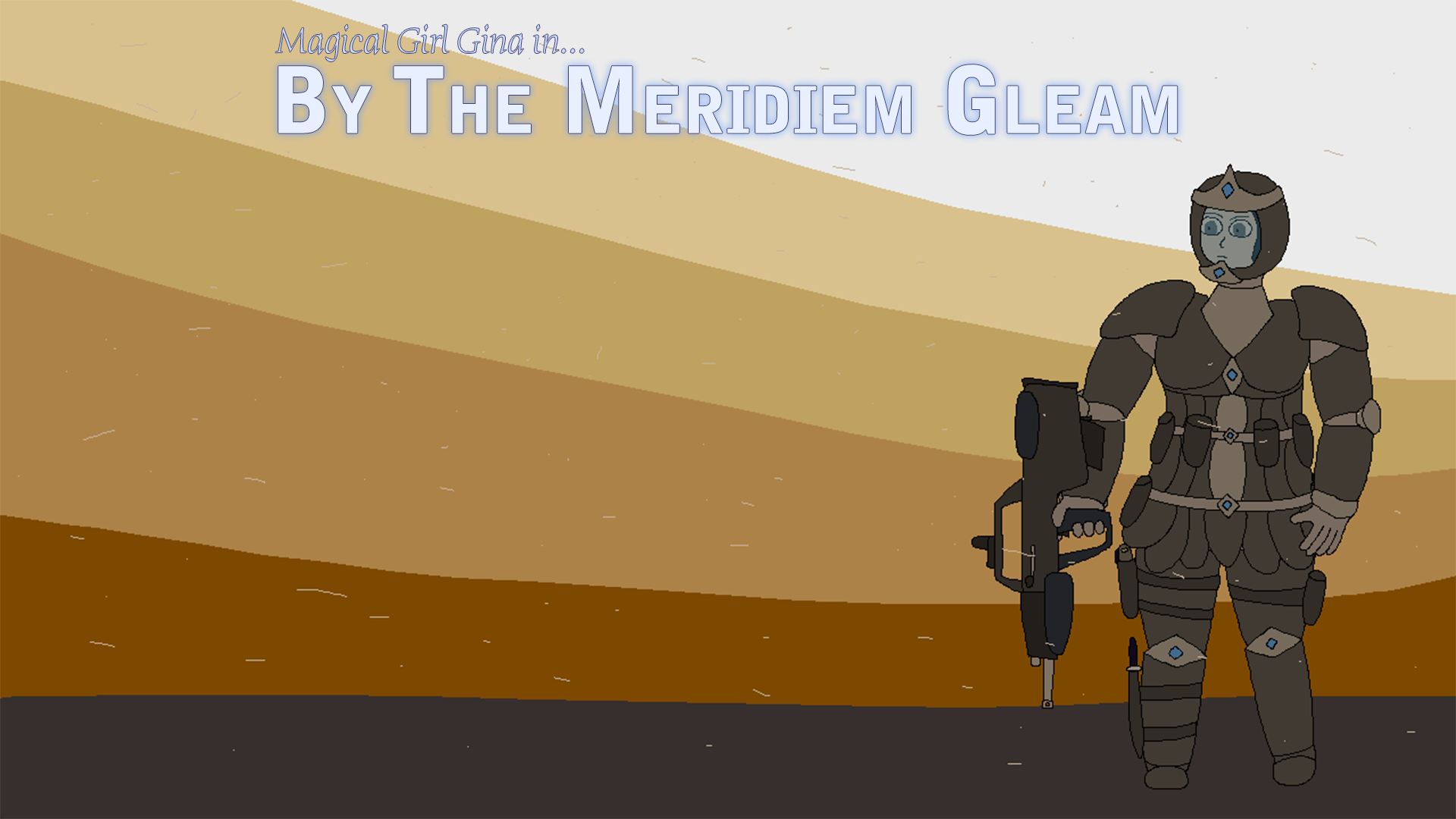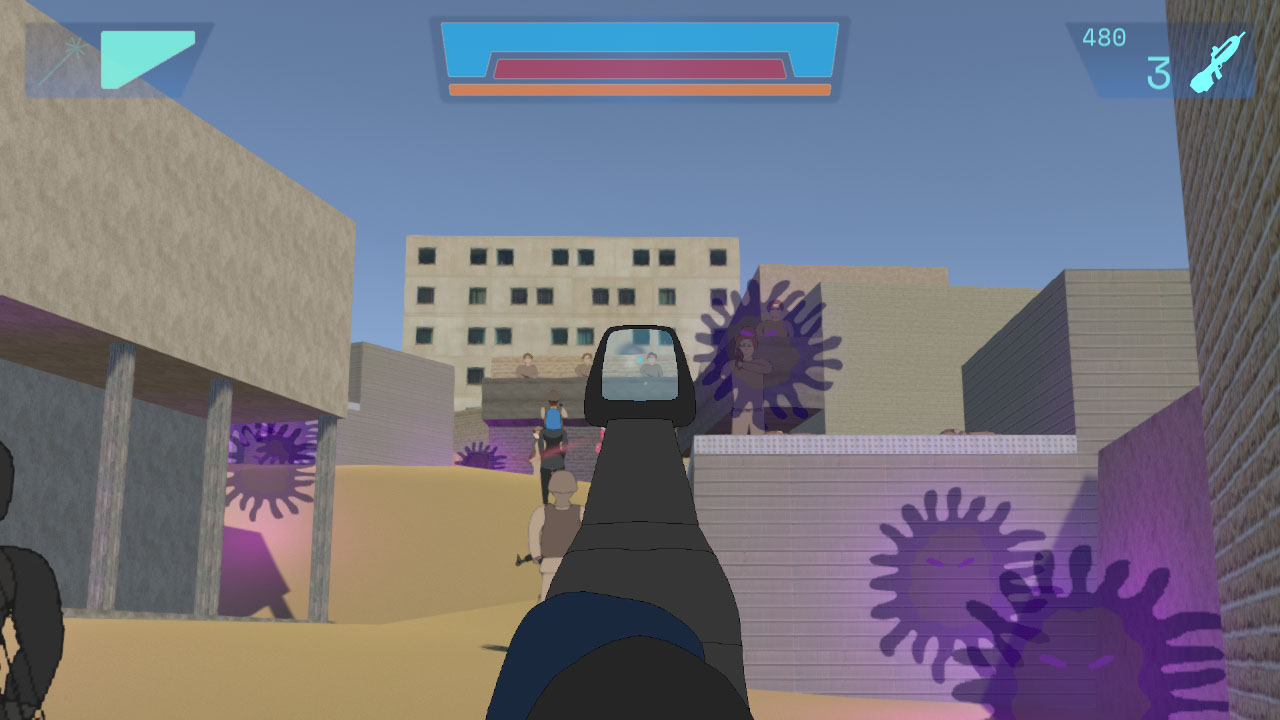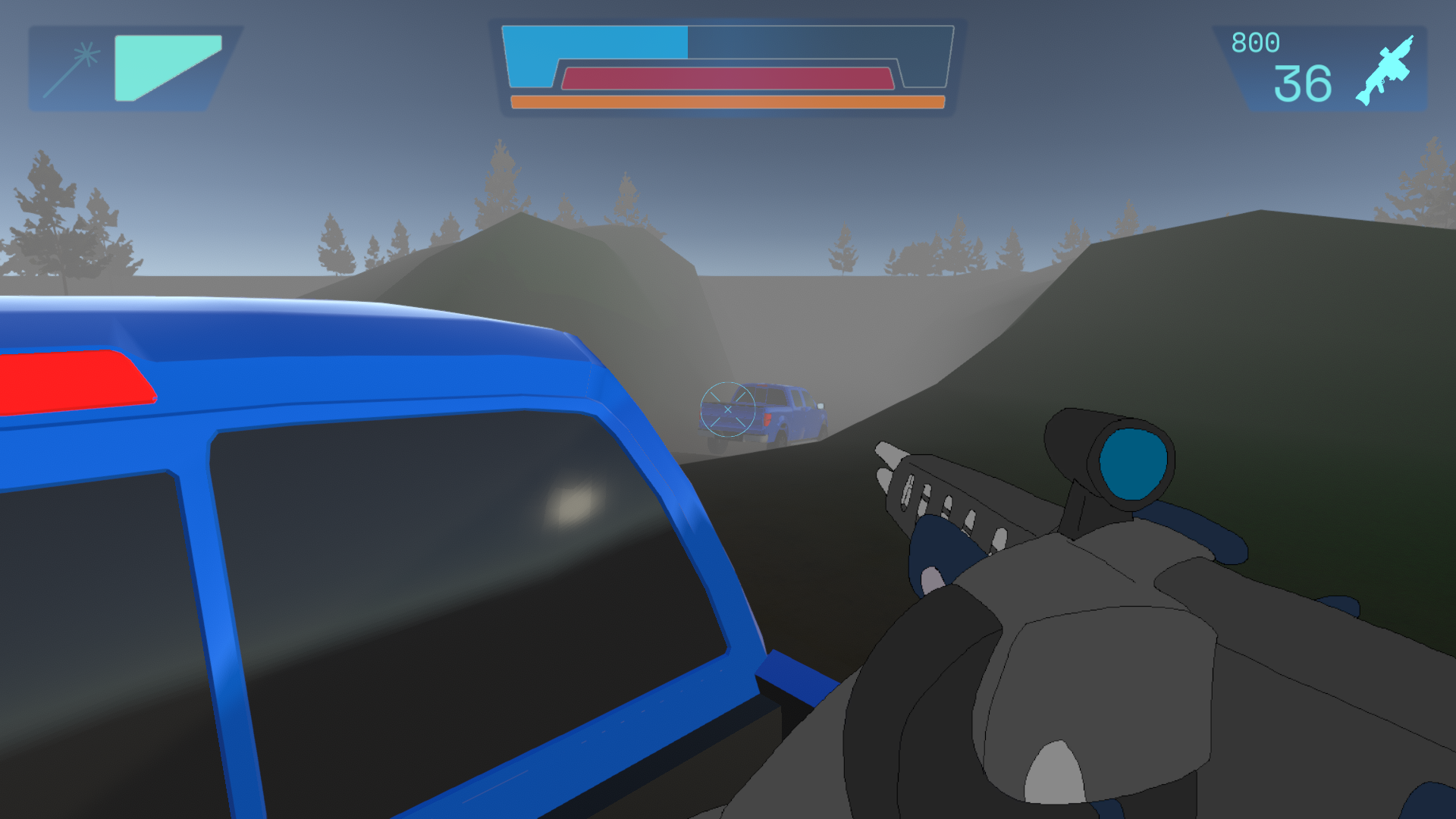By The Meridiem Gleam Release Postmortem
Just in time for the Magical Girls FOREVER Continue-It Jam II, By The Meridiem Gleam (formerly Project Daybreak) is ready to go!
For the first Continue-It Jam, I wrote a devlog which covers this origin of this project, the general concept and the start of its development. This time around, I’m going to recap the development process with a focus on the last chunk, and then reflect a bit on the project and my plans going forward.
This devlog may contain minor spoilers, so I recommend you play through the game first.
Going Steady

I finished up Gap Year in June, and I’d like to say I finalized the narrative and structure of the game immediately after that, but that’s not really true. It definitely firmed up around that time, with the general story beats and level concepts figured out, but there were a lot of open questions left. The design of the new magical girl wasn’t done until a month later and the flow of the city/museum section wasn’t figured out until just as I was starting to work on it, for example. And I knew what I wanted the final confrontation to look like, but setting it in a hangar rather than a warehouse only came about after I’d already started building the forest level.
An approximate timeline, based on commit notes, is something like this:
- July: slooooow progress on the Jungle level
- August: finish the Jungle level, build the motorcycle minigame level and other City levels, just barely get started on the Museum level at the very end of the month
- September: finish the Museum level in the first few days, build out the Forest level (truck sequence) for most of the month, moving on to cutscenes and the final level in the last week or so
- October: finishing the final level and outro in the first half of the month, struggling to clean up all the loose ends (including the montage sequence and new title image) and documentation
In general, progress was slow and steady. I didn’t really keep track of milestones in an organized way, but I did sort of work in sprints from level to level. I’ve used Trello boards and Github issues in the past to track things, but I’ve found it to be too much overhead when it’s just me, so I use a crude system in a OneNote page now. Throw the tasks in as I think of them, usually group them by level or milestone, cross them off or mark them as [DONE] when they’re finished.
I didn’t really frontload anything after the initial assets sprint, but returned to drawing art, grabbing resources, etc as I went. I don’t love that way of working, but I don’t really know how else I’d go about it given that I don’t really know what I need until I need it, and it was manageable. I think doing the “stuff I know I need” up front did help a lot here, because I was only dealing with the unknowns for the most part.
I’ve kind of struggled with how to approach this project in terms of cost-quality tradeoff. I’m very much in a place where I can’t/won’t put a ton of time into game dev, and this project has a pretty sizeable scope, and thus some sacrifices need to be made. At the same time, though, I want to make it good, especially since it’s the third (fourth?) game in the series (and for another reason, but I’ll get back to it at the end). I bounced back and forth a bit, occasionally pushing a little harder on one little thing but sometimes just dashing through with the easiest/fastest idea.
Ninety-Ten

There’s an old maxim in software development called the 90-10 rule or the 90-90 rule. It goes something like this: the first 90% of the work takes the first 90% of the time, the remaining 10% of the work takes the remaining 90% of the time.
When the second Continue-It jam started, I was already on the “last little bit” of the game. That “last little bit” would stretch on for almost two months. As the project got closer and closer to completion, it got harder and harder to make progress, or at least it really felt that way. It was both slower and more difficult. I think there are a few reasons for that.
Some of it was just down to burnout. I’d definitely overscoped the project, and it was really dragging on by that point. By the end I was firmly in “I just want this done” mode, which also had an effect on those “what to keep, what to cut” and “push harder or just leave it” decisions.
Those loose ends I mentioned earlier were generally left for later because I didn’t want to do them for one reason or another. I’d sit down to work on the game and choose to do something else that I was more excited about (or at least dreaded less). Which meant that at the end I had all the tedious, difficult, or otherwise annoying tasks and nothing else. Most of them turned out not to be as bad as expected, and in hindsight I should have come up with some kind of strategy for knocking stuff off that list as I went.
There were also things that came up at the end that I hadn’t accounted for earlier, or had just kind of forgot that I had to do. The way I work, I start from the top down, with a task like “make this level I have a vague concept of”, and that spawns smaller subtasks as I figure out how to go about it. Especially with the last levels and their cutscenes, there was a lot of “oh, I actually need a whole bunch of things to make this work” moments. And then when I thought the project was finished I realized I’d completely forgotten about the title screen.
For a while, it felt like the project was getting away from me, and actually completing it was getting further and further away. But the tide did turn, the list of outstanding tasks started to shrink, and the momentum picked up again.
Necessary Sacrifices

I’m going to be brutally honest here: Compared to At The Break Of Dawn, this one really is a few steps forward and a few steps back.
There are more levels with more variety and I think more interesting concepts, but there isn’t as much detail or complexity to them. The story is more ambitious and faster-paced, but it’s not as personal and doesn’t have any branching. There are some new gameplay ideas introduced, but it’s not as polished overall. Weapons are similar and so is the sprite work, but it does use the newer VN-style dialogue seen in See Who I Am.
The incredibly crude AI continues to be a problem- Shattered 2 and The Crystal Tower mostly worked around it, but there are several places in this game where it’s very visibly broken. I might do a more technical postmortem someday, but in short it would require a ton of work and I just didn’t have the wherewithal to do it for the one remaining project that would have benefit from it (this one).
In addition to strictly limiting scope at the start of development, I was also careful to limit new additions. I’m always reluctant to put in cool new ideas late in development, but this time I was ruthless about keeping them out. I came up with some really interesting concepts for the City and Forest levels just I was starting to work on them, but I stuck with the original plan because those would have added a ton more work.
It also more or less kicks the can down the road in terms of lore, and there’s a few lines of dialogue that lampshade that. I didn’t have the time to really slow down and worldbuild, and to be honest, I’m still not sure which direction I really want to take the series overall.
To be honest, I didn’t really go in with an intent to improve on the previous games at all, despite their known weaknesses. I’ve talked about where I am and why I’m not pushing forward before, so I won’t rehash that here. My focus was on telling the story and bringing the series to a place where it can reasonably pause. I did get to try a few different types of gameplay which I’ve wanted to do for a while, and I hope that at least adds some variety to the game.
Looking Back

At the end, am I happy with how this project turned out?
The development process has been a bit of a roller coaster, to be honest. I’ve talked about the challenges, and overall when I look back I really don’t want to repeat it. There wasn’t really any specific issue, it’s just that this is too much project for me now. Even with the scope cut down from the lofty early concepts, it’s still at the limit of what I can do, and it’s well beyond what I want to do. It’s doable, but it’s stuck around long enough for me to get frustrated and to block me from trying much else.
As for the product itself, I’m happy with how it turned out, given the limitations it was developed under. There are aspects I wished were better, but most of what I really wanted made it in, I hit all the narrative beats I had in mind, and I managed to get through the process without burning myself out (or at least, not burning myself out too much). In other words, I’m not entirely happy with it, but I have to acknowledge the reality of its development, and even with that aside I’m still mostly satisfied with the end result.
I remarked in the first devlog that it really felt like I was making an adaptation of something else, because I was trying to distill a bigger concept into something workable. That’s a feeling that never went away, and there’s a lot of things that didn’t make it in that I wish could have. I would have loved to have had the big game as originally conceived, but I would have loathed to actually work on it.
Moving On

There are weaknesses I’m aware of, and probably ones I’m not, but there won’t be a major update after launch. Maybe a minor one, if there are serious bugs or some minor tweaks that need to be made, but for the most part this project is done done.
I pointed out that there was extra pressure to make this one good, and I’ve hinted at the reason throughout this piece and elsewhere but I’ll make it clear here: this is going to be the last big Outliers game for a while. It isn’t the end of the series, but it will be the last mainline entry for the foreseeable future, and might be the last big-ish game (with future entries being smaller games or other media). I do want to come back to it- the story of Gina, Sakura, and friends isn’t over- but I am going to take a break for a while and come back approaching it a bit differently.
I’ll wait for a different post to really get into my future plans, but I maybe have one more planned project- Shattered 3- and after that it’s an open book. Now that this game is out, I’m going to take a break for a while and come back to things in the new year.
Files
Get By The Meridiem Gleam
By The Meridiem Gleam
Magical Girl Gina and friends fight around the world as part of a special task force
| Status | In development |
| Author | XCVG |
| Genre | Action |
| Tags | Female Protagonist, First-Person, FPS, Magic, Story Rich, War |
| Languages | English |
| Accessibility | Subtitles, Configurable controls |
More posts
- Project Daybreak Demo PostmortemJun 17, 2024

Leave a comment
Log in with itch.io to leave a comment.